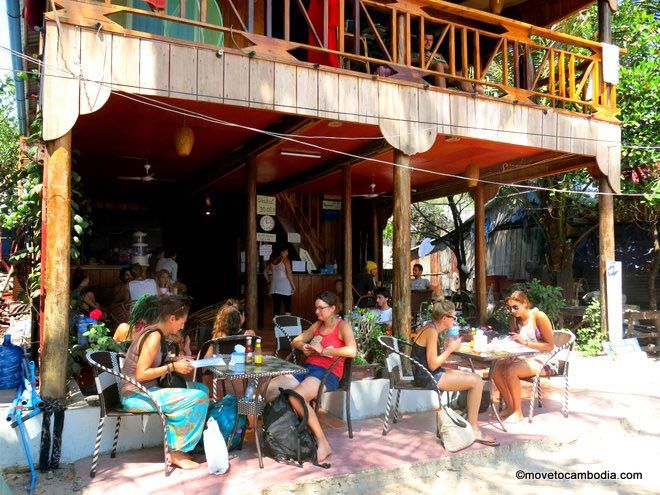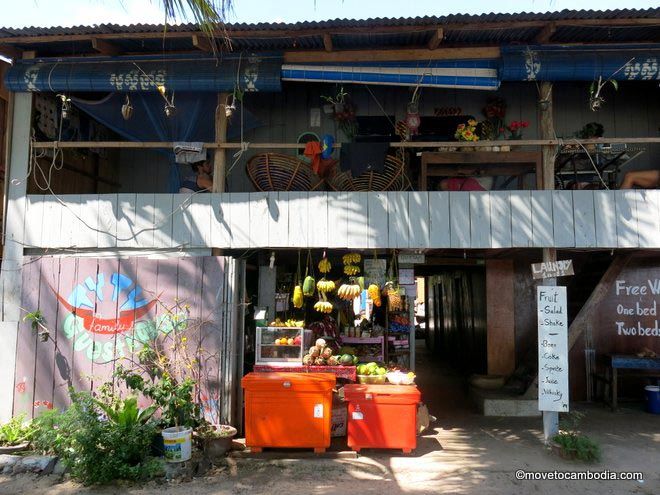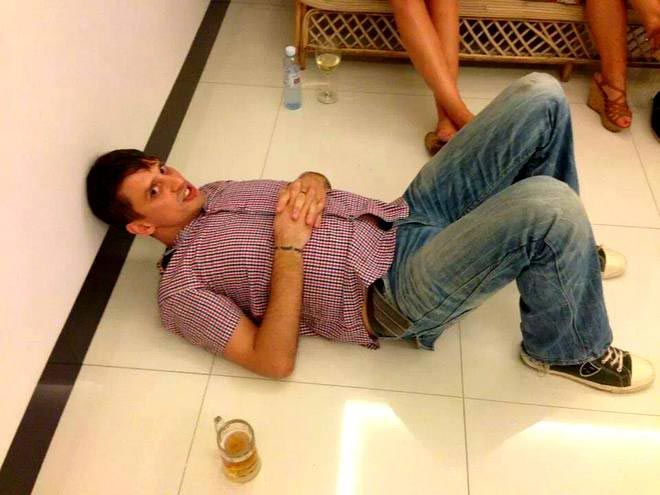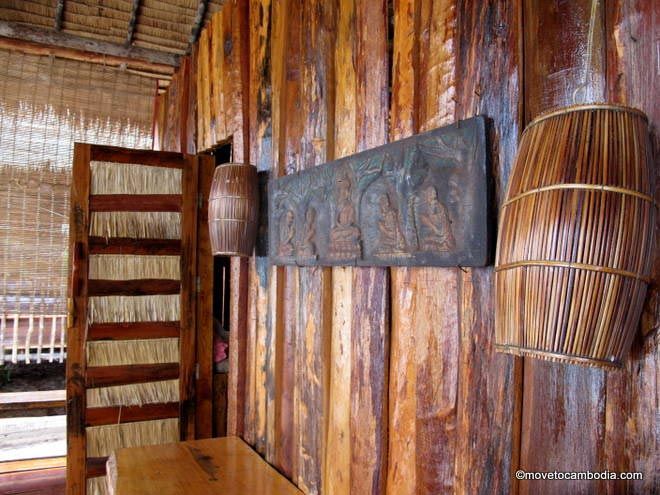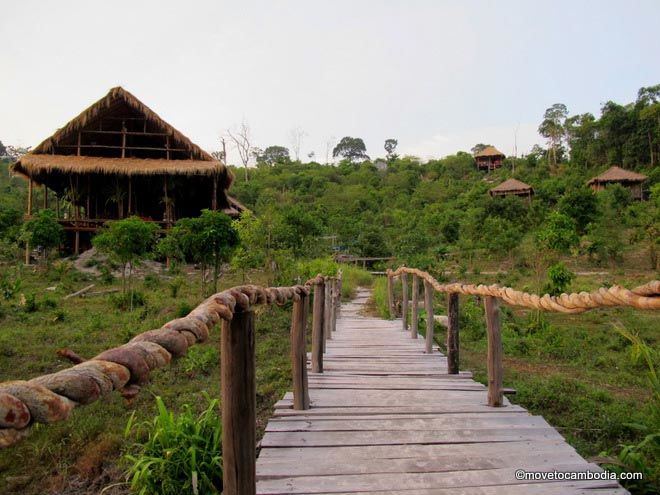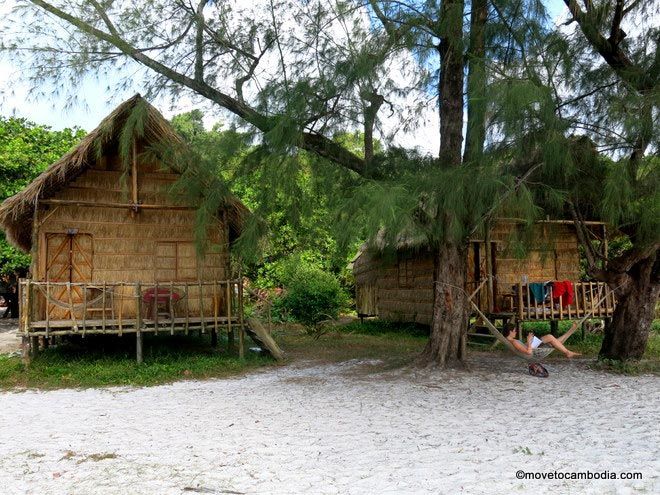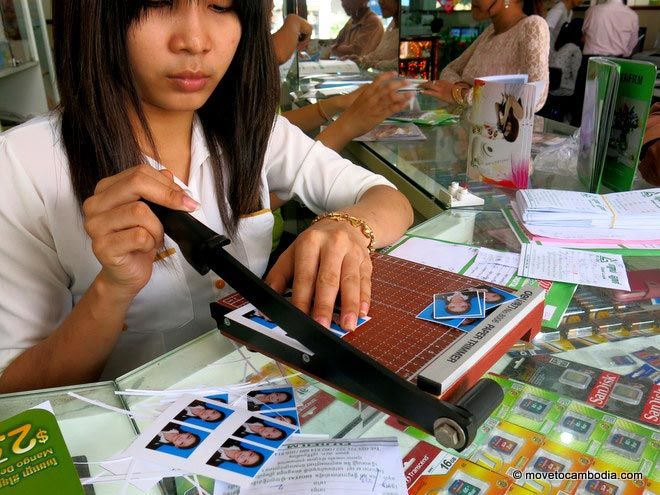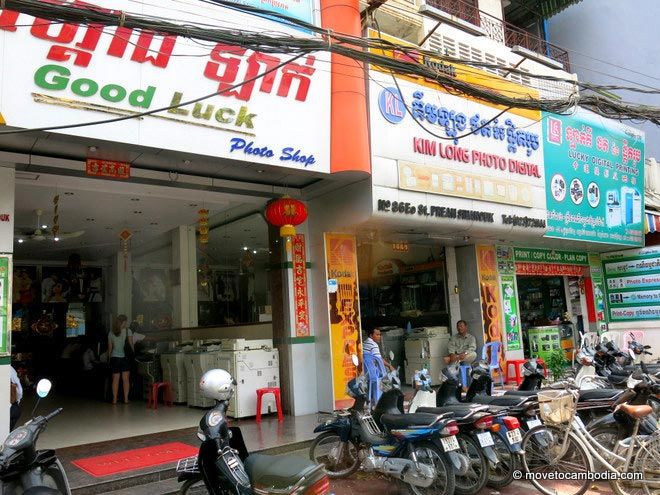Petit Temple Suite & Spa, the sister hotel of Petit Villa Boutique & Spa, is located in the Wat Damnak area of Siem Reap, about a ten minute walk from the Old Market and town center. The location offers nighttime peace and quiet and a needed respite from noisy Pub Street. We just spend four days here, and can say with confidence that Petit Temple’s boutique-style accommodation is an ideal place to stick your feet up and relax after a long day trawling the temples of Angkor Wat.
The two-story hotel surrounds an infinity pool which is flanked by tropical plants and sun loungers and offers great place to kick back with a cocktail and work on your tan. If sunbathing is not your thing, then you also have the option of sitting outdoors under the shade of the mango trees whilst catching up on your email via the surprisingly reliable WiFi.
Petit Temple is designed to put one in mind of Angkorian temples (as if it’s possible to forget them while in Siem Reap) and the staff wear traditional Khmer dress. Breakfast is included with the rooms, and have several Western and Khmer selections. Breakfast doesn’t require an early-morning wake up and is served from 7 a.m. til 11 a.m. This is a nice change from most of the Siem Reap hotels that stop serving breakfast at 10 at the latest. The extra hour allows breakfast to be a more leisurely affair, as it should be when you are on holiday, instead of the mad scramble downstairs to make it to the dining area before the last dish of cold fried eggs gets tossed in the bin. All bases are covered here; eggs, fresh tropical fruit, muesli, yoghurt, noodle soup, pork and rice, croissants as well as various teas and a very good cup of coffee that seems to have no bottom.
The rooms have old-fashioned tile floors and are very well outfitted, and come with hot shower, bathtubs (sometimes in the room) cable TV, bathrobes, tea and coffee, fresh fruit, locking safe and all the other extras you would expect from an upper, mid-range hotel. Rooms are cleaned daily with daily turn-down service and each room has either a balcony or a small porch area that looks over the pool.
Happily, the staff are very attentive and not too overbearing. They also speak very good English which certainly helps if you are trying to find out a bit more about the surrounding area or arrange a tour of Angkor Wat. Guests are also offered a free one-hour massage, and the massage rooms are open until 9 p.m. It’s hard to overstate how exhausting temple viewing is, especially in the hot weather, so a massage and dip in the pool is a great way to wind down from a long day of traversing the temples. They also offer other spa treatments such as facials and scrubs.
Rack rates and prices on the website start at $95, and most desk staff seem unwilling to negotiate (others will, so try your luck). Book on Agoda, however, and rooms start at $31, even in high season. They will not offer the Agoda price in person, even if you are already staying at the hotel. We booked through Agoda and when we wanted to extend our stay, had to make another Agoda booking. So be prepared! Book a room at Petit Temple Suite & Spa on Agoda now!
Petit Temple Suite & Spa
Wat Damnak, Salakomrouk Commune, Siem Reap
Tel: 063 764 234; Mobile: 088 857 5389
petittemple.com



